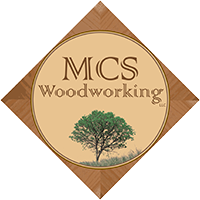Selecting the perfect wood species is one of the most critical decisions in any custom millwork project. The species you choose impacts durability, appearance, cost, and long-term performance. This guide will walk you through the key considerations—project requirements, wood properties, sustainability factors, and collaboration with experts—to ensure your millwork stands the test of time and fully supports your design vision.
Understand Your Project Requirements
Before evaluating wood species, clarify the functional and aesthetic needs of your project. Is the millwork destined for a high-traffic reception area, a private executive office, or a moisture-prone breakroom? Heavy-use installations demand harder, more wear-resistant woods, while accent pieces or trim can utilize softer, more decorative species. Determine whether you need dimensional stability in fluctuating temperatures and humidity (such as in healthcare facilities) or if you prioritize specific grain patterns for a showcase element in a lobby or boardroom.
Compare Hardwoods and Softwoods
At the broadest level, woods fall into two categories: hardwoods and softwoods.
Hardwoods—like oak, maple, cherry, and walnut—offer greater density, scratch resistance, and rich grain variations. They excel in millwork for casegoods, flooring, and furniture that must endure daily use.
Softwoods—such as pine, cedar, and fir—are lighter, more economical, and easier to machine, making them ideal for decorative trim, paneling, or painted applications.
Weigh the trade-offs: a hardwood reception desk may cost more upfront but deliver decades of service, while a custom painted softwood installation can meet budget constraints without compromising design.
Evaluate Grain, Color, and Finish Compatibility
Each wood species presents unique grain patterns and color palettes that influence your final aesthetic.
- Quarter-sawn white oak delivers a straight, uniform grain and silver-gray tones that work beautifully with modern or transitional designs.
- Cherry offers warm reddish hues that deepen over time, imparting a timeless elegance.
- Maple’s tight, subtle grain and light color provide a neutral backdrop for stains or clear finishes.
When selecting species, consider how light interacts with the grain and finish on-site and whether your project calls for a natural clear coat, a tinted stain, or a durable conversion varnish. Mock-ups and finish samples are invaluable at this stage—they allow you to see exactly how each species will look under your specific lighting conditions.
Factor in Durability and Maintenance Needs
Different environments impose different wear profiles on millwork. In a corporate lobby, puncture-resistant surfaces and impact-resilient edges are crucial; in a breakroom, moisture resistance and ease of cleaning are priorities. Woods like hard maple and white oak rate highly on the Janka hardness scale, resisting denting and abrasion.
Species treated with water-resistant finishes—such as UV-cured conversion coats—can withstand spills and humidity fluctuations. If low maintenance is a must, consider engineered products like finger-jointed hardwoods or laminated panels that combine the beauty of natural veneers with enhanced dimensional stability and finish adhesion.
Consider Sustainability and Regulatory Compliance
Sourcing responsibly harvested wood is essential for environmental stewardship and often required by green-building certifications (LEED, WELL, etc.). Look for species certified by the Forest Stewardship Council (FSC) or those available through reclaimed-wood suppliers. Reclaimed or salvaged woods not only reduce environmental impact but also add unique character and patina.
When working on public or healthcare projects, verify compliance with local fire codes, VOC limits, and ADA requirements for finishes and surface textures. A knowledgeable millwork partner can guide you through these regulatory considerations and recommend species or engineered alternatives that meet all standards.
Balance Cost with Long-Term Value
While exotic woods like mahogany or zebrawood make a dramatic statement, they often carry premium price tags and longer lead times. Common domestic species like red oak, hard maple, and ash deliver excellent performance at a more predictable cost and consistent availability.
Use CAD-driven yield optimization to minimize waste, and explore mixed-species applications—pairing an exotic veneer on high-impact focal pieces with domestic hardwoods in secondary areas—to stretch your budget without sacrificing design intent. Transparent, itemized pricing from your millwork partner ensures you understand where material costs lie and where value-engineering options exist.
Partner with Experts for Precision & Peace of Mind
Navigating wood species selection can feel overwhelming but working with a seasoned commercial millwork partner simplifies the process. At MCS Woodworking, our team blends decades of craft experience with advanced CAD/CAM workflows and a 20,000-sq-ft Menomonee Falls facility.
We conduct on-site consultations, field measurements, and produce finish mock-ups to confirm your species choice before production begins. Our collaborative approach ensures your custom millwork not only meets aesthetic goals but also performs flawlessly in your specific environment—backed by warranty support and lifelong service.
Ready to Choose Your Perfect Wood Species?
Choosing the right wood species is foundational to the success and longevity of your custom millwork. By aligning project requirements with wood properties—durability, grain, finish compatibility, and sustainability—you unlock the full potential of your design. Ready to select the perfect species for your next project? Reach out to MCS Woodworking’s expert team for a consultation and sample review, and let us craft millwork that combines beauty, performance, and lasting value.

